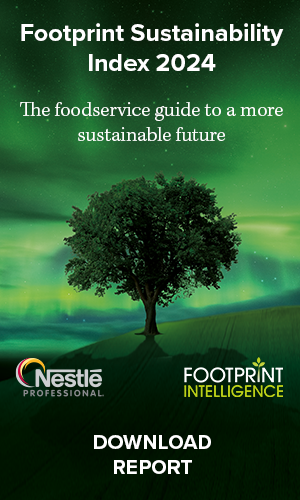 James Samson, UK Brand Manager of Champagne Louis Roederer, dips into the ancient past and demonstrates that thoughts about sustainability are not exclusively contemporary.
James Samson, UK Brand Manager of Champagne Louis Roederer, dips into the ancient past and demonstrates that thoughts about sustainability are not exclusively contemporary.
Man is at heart a dreamer. However close to the gods he may sit in his assumption of power there will always be a clod of earth clinging to his space boots. No amount of pragmatism can wrench from his heart the mysticism he beholds in the world around him in the humbling implications of a fossil bed, in the awesome movement of the continental plates or the endless wheeling of the stars above him. In his relationship with nature Man may be a farmer but he is also a priest.
But what exactly does this guardianship of the earth involve? And how far have we strayed from the path? In the ancient world this farmer-priest role would not have been greeted with the cynicism we witness today. The guarantee of the presence of food and, as the true benefits of civilisation began to spread, wine was unquestioningly accepted as being the result of religious as well as physical investment. There was a clear appreciation of this sacred balance between taking and giving. Man was granted leave to be master over the animals and plants of the earth and to make use of them for his sustenance but only provided that this was accompanied by a suitable exchange. This may have been in the form of a sacrifice (in itself a limiting exercise where resources are scarce) or in a symbiotic sense of replacement (crop variation or the onward movement of the tribe to new territory). This wisdom must have been hard won from the experience of over-exploitation and the eventual collapse of resources. So to the ancient mind, without these ritual relationships and an acceptance of the limitations imposed upon his behaviour, man could expect no guarantee that the cycle of life would recommence the following year.
The way this simple message explaining the traffic between man and nature would have been drummed into the group, would have been through story-telling and ritual re-enactment. The most famous example from the classical world of this myth about rebirth and the passage of the seasons is the Abduction of Persephone. In the Greek pantheon Persephone was the daughter of Zeus, the Father of the Gods, and Demeter, an earth Goddess of grain and growth linked specifically to corn and the seasons known to the Romans as Ceres and today celebrated in our word cereal. In the myth, Persephone, who represented fertility, was picking handfuls of purple crocuses, royal blue irises and sweet-smelling hyacinths symbols of nature at her most giving, when her eye was caught by the vision of the most enchanting flower she had ever seen the narcissus. But when she reached down to pluck it from its resting place, the ground opened up and Hades, god of the Underworld, emerged and carried her off below the earth as his bride. For the long months of her incarceration her mother searched the earth in vain for her daughter and in her distraction forgot her duties and the cycle of life ceased on earth. Oxen drew the plough in vain, barley seeds fell fruitlessly to the ground, nothing germinated and nothing grew. It all came to a head when the race of men stood in danger of perishing and without men to honour them the gods in turn faced extinction.
This spurred the gods to force Hades to allow Persephone to return to earth. This release, however, was to be conditional. Whilst beneath the earth, Persephone had eaten the seeds of a pomegranate and so in a binding blood sacrament with the world of the dead she was obliged to spend a third of each year in the underworld for all time. Her return to earth coincided with the blooming of the same spring flowers which carpeted the meadow where she was first abducted.
So what does this tell us about the way our ancestors saw the seasons and how they could bargain with the gods to try to control the world around them? The myth attempts to explain in a most striking way the reasons for winter dormancy followed by the dramatic rebirth of life in the spring. Sacrifices to Demeter and Persephone were needed to ensure that the daughter/ Spring came back every year and the mother did not forget her duties ever again. The celebration of this myth attests to the awareness our ancestors had of our reciprocal relationship with the earth. The implication being that we must remember our obligations to the earth and the gods which act as vital barriers to our own excesses. If not it would lead to unbalance and discord and the eventual disappearance of the blessings of the earth.
Modern producers of food and drink are the moral descendants of the original farmer- priests who negotiated this relationship with the earth and with the gods. As such they bear the responsibility for acting as the custodians of the earth in order that future generations can feed and water themselves as our ancestors did before us. Mass production does not leave much room for mystery and modern science leaves no room for myth despite the hard kernels of hidden truths. By wilfully ignoring the problem there does exist a real danger that the cycle of rebirth and replenishment may break down if the earth becomes contaminated from excessive overuse of scarce resources or if the rearing of animals becomes so industrial as to pollute not only the animals themselves but to pollute our own consciences along with the earth.
Sustainability has always been an integral part of all farming until as recently as the last century. Since the introduction of mechanisation there has always been resistance in the face of apparent progress that there must be a sense of proportion and balance regardless of whether it is done in the name of the gods or nature or simple common sense. Now as the planet’s vastly increasing need for food expands, we can only hope that the race of farmer-priests will prove hardy enough to retain a stake in the future and keep the gods on our side.











